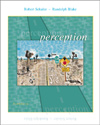| Abney's Law | The principle that the visual effectiveness of a light composed of different wavelengths can be predicted from the sum of the responses to the wavelengths considered separately.
|
 |
 |
 |
| action potentials | Brief electrical discharges that are generated by a neuron and that represent the "vocabulary" of communication within the nervous system. See axon.
|
 |
 |
 |
| axon | The portion of a neuron over which action potentials are conducted. A group of axons constitute a nerve or a tract. See action potential.
|
 |
 |
 |
| Bloch's Law | The principle that all stimuli in which the product of time and intensity is constant will be equally detectable.
|
 |
 |
 |
| crowding effect | The tendency for small letters to be difficult to read when they are in close proximity to one another.
|
 |
 |
 |
| dark adaptation | The increase in visual sensitivity that accompanies time in darkness following exposure to light.
|
 |
 |
 |
| duplex | Referring to the co-existence within the eye of two different systems, scotopic and photopic. The scotopic system provides high sensitivity in dim light; the photopic system provides high resolution under daylight conditions.
|
 |
 |
 |
| eccentricity | The distance between the center of the retina and the location of the retinal image cast by an object.
|
 |
 |
 |
| Hermann grid | A regular, geometric pattern within which illusory spots are seen; the presence and strength of the illusory spots depend on the spacing of the grid's elements.
|
 |
 |
 |
| intensity | The physical variable expressing the strength or amplitude of a stimulus, such as light or sound. Intensity can be measured by physical devices such as photometers and sound-level meters. See amplitude.
|
 |
 |
 |
| lateral inhibition | Antagonistic neural interaction between adjacent regions of a sensory surface, such as the retina.
|
 |
 |
 |
| lightness | A perceptual variable that is correlated with light intensity.
|
 |
 |
 |
| lightness constancy | The tendency for the perceived lightness of an object to remain constant despite variation in the level of its illumination.
|
 |
 |
 |
| lightness contrast | An effect in which a fixed physical intensity of light produces different perceived lightnesses depending upon the intensity of the light's background.
|
 |
 |
 |
| M cells | Retinal ganglion cells characterized by relatively large cell bodies and axons, large receptive fields, strong response to small differences in light levels in receptive field center and surround, and lack of sensitivity to stimulus wavelength. See P cells.
|
 |
 |
 |
| Mach bands | Illusory spatial gradations in perceived lightness that occur in the absence of corresponding gradations in the actual spatial distribution of light.
|
 |
 |
 |
| microelectrode | A thin wire that can be inserted into brain tissue in order to record action potentials.
|
 |
 |
 |
| P cells | Retinal ganglion cells characterized by relatively small cell bodies and axons, small receptive fields, weak response to small differences in light levels in receptive field center and surround, and good sensitivity to stimulus wavelength. See M cells.
|
 |
 |
 |
| photon | The smallest unit of light energy.
|
 |
 |
 |
| photopic | Referring to vision under daylight levels of illumination. See scotopic.
|
 |
 |
 |
| Purkinje shift | Perceptual variation in the relative lightness of different colors as illumination changes from daylight to twilight.
|
 |
 |
 |
| receptive field | The area of the retina within which the activity of a neuron can be influenced; sometimes defined in terms of the region of visual space from which a neuron can be influenced.
|
 |
 |
 |
| resolution | The ability to distinguish spatial details of an object.
|
 |
 |
 |
| retinal ganglion cells | The collector cells that are responsible for the last stage of visual processing within the retina; axons of the retinal ganglion cells constitute the optic nerve.
|
 |
 |
 |
| Ricco's Law | The principle that stimuli will be equally detectable if the product of their intensity and area is constant.
|
 |
 |
 |
| scotopic | Referring to vision under dim levels of illumination. See photopic.
|
 |
 |
 |
| single cell recording | The use of a microelectrode to record the neural activity of individual nerve cells as they respond to stimulation.
|
 |
 |
 |
| spatial summation | The process by which neural signals from neighboring retinal areas are combined, thereby increasing sensitivity. See temporal summation.
|
 |
 |
 |
| temporal summation | The process by which signals from a neuron or neurons are cumulated over time, thereby increasing sensitivity. See spatial summation.
|
 |
 |
 |
| visual acuity | A measure of the smallest detail that a person can resolve.
|



 2002 McGraw-Hill Higher Education
2002 McGraw-Hill Higher Education

 2002 McGraw-Hill Higher Education
2002 McGraw-Hill Higher Education